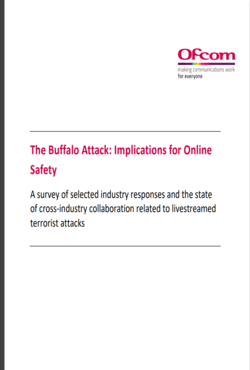By Russell Brewer, Tyson Whitten, Morgan Sayer, Colette Langos
Little systematic attention has been given to the specific digital settings and contexts in which cyberdeviance occurs. As a result, many of the preventative programs developed or recommendations made are not necessarily evidence based. Identifying and articulating evidence-based approaches to developing effective interventions for young people is critical due to the serious social and economic harms associated with increasing levels of cyber-deviance (Brewer et al. 2018; Cale et al. 2019; Livingstone et al. 2010; 2011). Importantly, much research suggests the development of effective interventions relies on the accurate identification of factors known to contribute to delinquency (Andrews & Bonta 2010; Dowden & Andrews 1999; Koehler et al. 2013). A substantial body of research has identified risk factors associated with deviance in offline settings. Dynamic risk factors that are relatively stable across time (including those relating to behavioural functioning, propensity for risk-taking and parenting practices) tend to have a strong influence on the risk of 2 delinquency in offline settings, and may also be a precursor for serious and persistent anti-social behaviours (Farrington, 2010; Moffitt et al. 1996). Fortunately, given that these stable risk factors often first manifest at an early age, vulnerable youth can be prospectively identified early in life, and subsequently prioritised for indicated prevention programs. When it comes to cyber-deviance, however, the evidence base regarding its prevention is far less developed, particularly as it pertains to young people. In addition to not knowing the impact of such risk factors on cyber-deviance, in recent years, researchers have hypothesised that there may be distinctive and divergent criminogenic factors at play whilst online, when compared to offline forms of deviance. This work argued that features of online environments can have profound implications for how adolescent delinquency arises and can therefore make the digital environment a hazardous place from a risk management and mitigation perspective (Goldsmith & Brewer, 2015). Recent studies have begun to account for these criminogenic properties and understand cyber-deviance as driven not only by individual (i.e. dynamic) attributes, but also as a function of exposure to digital technologies, sites and services, and the interactional opportunities afforded as a consequence (e.g. Brewer et al. 2018; Cale et al. 2019). This body of work suggests that in order to fully understand the risk factors online, both idiosyncratic and exposure measures must be accounted for. This report aims to identify whether time-stable dynamic risk factors are associated with adolescent cyber deviance in Australia, as well as better understand the risks associated with exposure across digital environments. This research was conducted for the purposes of developing an evidence base from which researchers can draw upon to design more effective interventions. This was achieved by conducting a cross-sectional study in a South Australian secondary school (n=327) that assessed the factors associated with adolescent engagement in eight forms of cyber-deviance: cyber-hate, cyberviolence, digital piracy, unauthorised access (hacking), cyber-bullying and abuse, online fraud, sexting, and image�based sexual abuse.
Adelaide: University of Adelaide, 2020. 34p.





















